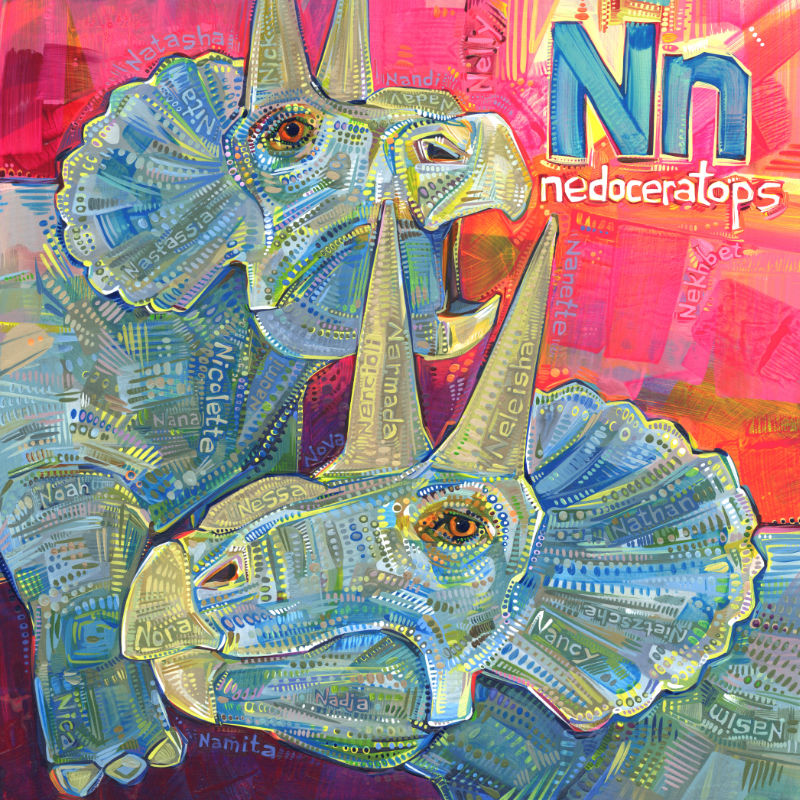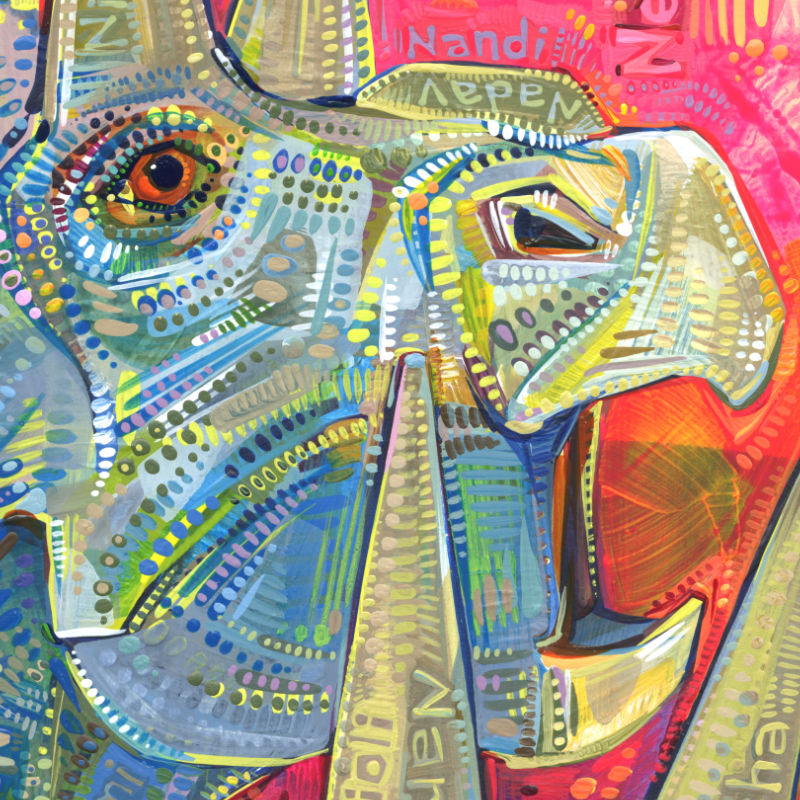Blog / 2020 / How to Love Your Art #3: Talk about It
February 10, 2020
So far in the “how to love your art” blog series, we’ve talked about hating other artists as well as loving them. Today, we’re going to concentrate on our own creativity.
If you want to feel positive about your art, you’re going to have to start saying positive things about it.
Recently, I ended up chatting with a young artist, someone whose work I’d never seen. Naturally I asked this artist what their work looked like. The response could not have been more quintessentially n00b:
“My paintings are poop. The subject matter is poop, and I make the works out of poop. It’s all poop.”
Needless to say, the artist was speaking metaphorically. Their description was meant to convey their lack of confidence about their work. The problem with talking like this is that, unfortunately, we tend to listen to ourselves very well. Speaking about your work negatively ends up being the same as feeling negatively about it.
It’s kind of like the old saying: if you have nothing nice to say, then don’t say anything at all. Except that, when it comes to your art, you probably should not actually say nothing. Instead, if you’ve got nothing nice to say about your art, start making stuff up.
I mean it! Fake it till you make it, because, in this case, you absolutely will make it if you fake it enough. As you listen yourself speak about your work in positive terms, you will almost certainly hear yourself say things that will surprise you. Talking about your work teaches you about what you are creating!
I still have a hard time being overtly complimentary of my own art, but I can be descriptive without using any negative language. For example, though I can’t say this nedoceratops painting is extraordinary, I have no trouble avoiding calling it “my little dinosaur painting” or using other dismissive terms. More importantly, I can easily go on and on about its vibrant colors, the sweetness of these ancient herbivores, and the significance of the project that this painting comes from.

N Is for Nedoceratops
2020
acrylic on panel
14 x 14 inches
The first names embedded in this image are Nadav, Nadja, Namita, Nana, Nancy, Nandi, Nanette, Naomi, Narmada, Nasim, Nastassia, Natasha, Nathan, Nekhbet, Neleisha, Nelly, Nencioli, Nessa, Nica, Nick, Nicolette, Nietzsche, Nita, Noah, Nora, and Nova.
N Is for Nedoceratops already has a forever home—it was one of the paintings that was pre-purchased via the Kickstarter I did for the project. That said, if you want prints or other pretty items with this image, check out my Redbubble shop! The full book will be available later this year.
For more about how to love your art, check out these posts:
- Figure out what art you find boring.
- Learn to appreciate other artists’ work.
- Determine what parts of it make you happy.
- Figure out what worries you most.
- Decide on what’s right and wrong in your art.
- Play with your self-expression versus communication ratio.
- Document your work.
- Inventory your pieces.
- Give your art away.
- Charge a lot of money for your work.
- Take a break from your art now and again.
- Don’t claim the copyright on your work.
- Don’t let jerks near it.
- Introduce your art to all your favorite people.
- Celebrate your work.
- Define the word “love.”

Here’s what I’ve been reading since my last alphabet book update:
The Clan of the Cave Bear by Jean M Auel
I first read this book when I was pretty young, maybe twelve years old. At that point, I had already had doubts about organized religion, and this novel made it clear to me that all structured forms of spirituality exist to harm women. I know the Earth’s Children book series has a reputation as a prehistoric “bodice ripper” but this first book really shaped me. And, in today’s MAGArific environment, the antagonist’s hatred of the main character is especially poignant.
Milkman by Anna Burns
Told with a pleasantly conversational tone and structure, this story is both deeply terrifying and quite funny. It borders on a kind of science fiction even though it’s set in Northern Ireland in the 1970s. Also, the audiobook is beautifully performed.
I’m Not Dying with You Tonight by Kimberly Jones and Gilly Segal
This excellent YA novel describes the night of a riot through the eyes of a black teenager and a white one who end up navigating the violence together.
The Long Way to a Small Angry Planet by Becky Chambers
Definitely the best aliens I’ve encountered since I read Vernor Vinge’s A Fire Upon the Deep last year. And though I enjoyed learning about Vinge’s creatures, Chambers’ are much more relatable while still remaining delightfully complex.
Meet Me in the Future by Kameron Hurley
These short stories blend science fiction and fantasy in a way that reminds me a bit of NK Jemisin’s work. I didn’t love the book, but then I tend to be pretty finnicky about short stories. I want to try out some of Hurley’s longer works.
Winners Take All by Anand Giridharadas
Like Dark Money by Jane Mayer, Winners Take All is a look at why our system is so messed up. Giridharadas makes a thorough critique of the ideology of doing well by doing good, leaving me all the more disgusted with the corporate world. Bonus: the audio version of the book is read by the author and that lends the book a pleasingly human and memoirish quality that I’d love to hear in more non-fiction audiobooks.
Maybe this post made you think of something you want to share with me? Or perhaps you have a question about my art? I’d love to hear from you!
To receive an email every time I publish a new article or video, sign up for my special mailing list.
If you enjoyed this post, Ko-fi allows you to donate. Every dollar you give is worth a bajillion to me!



